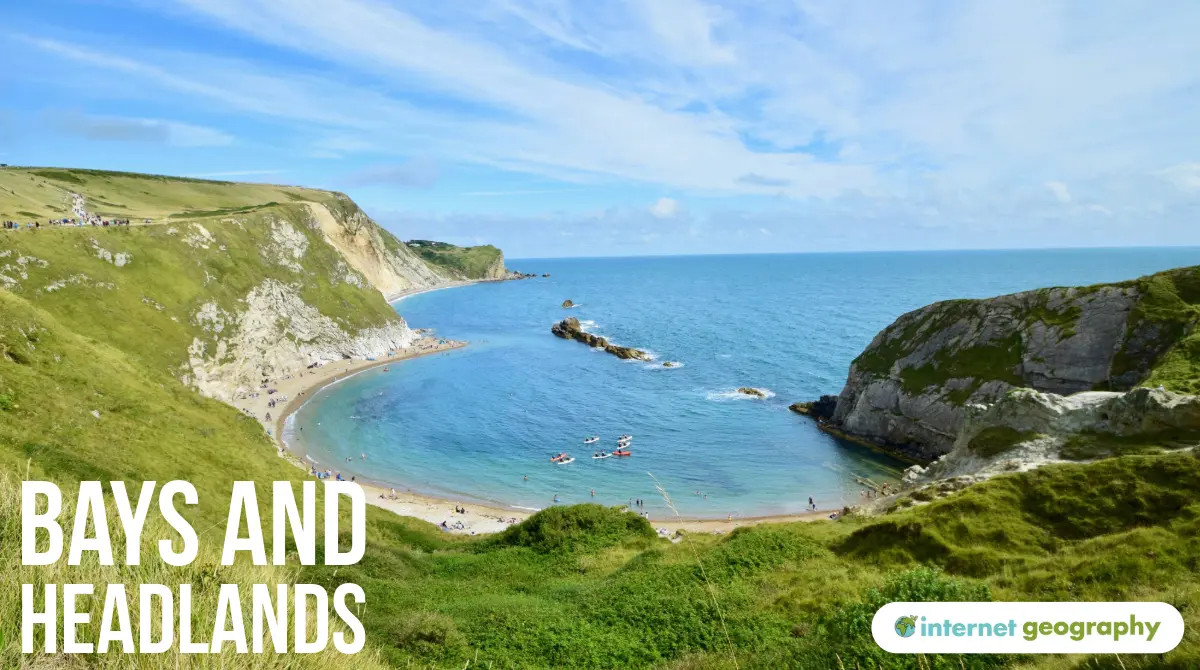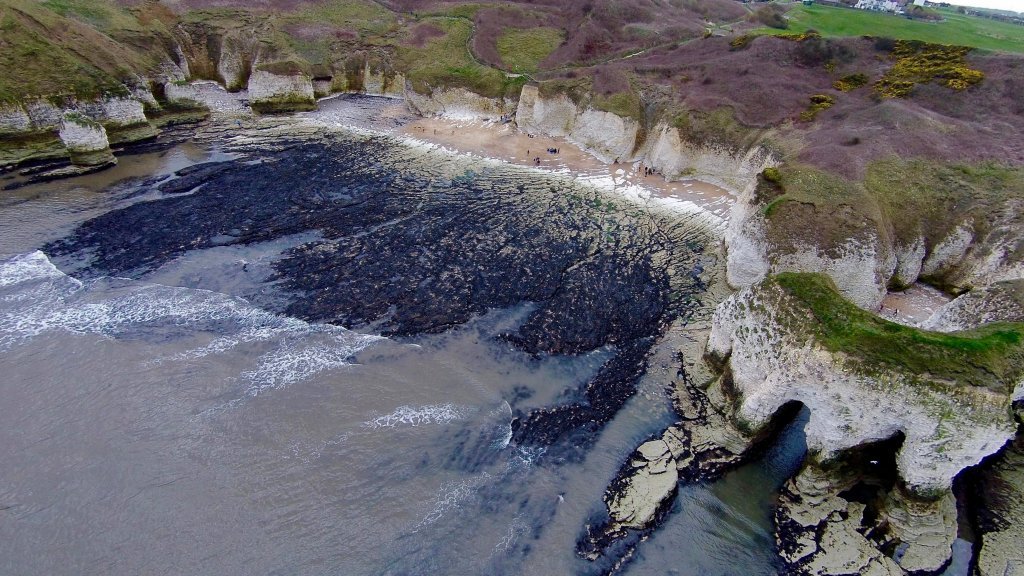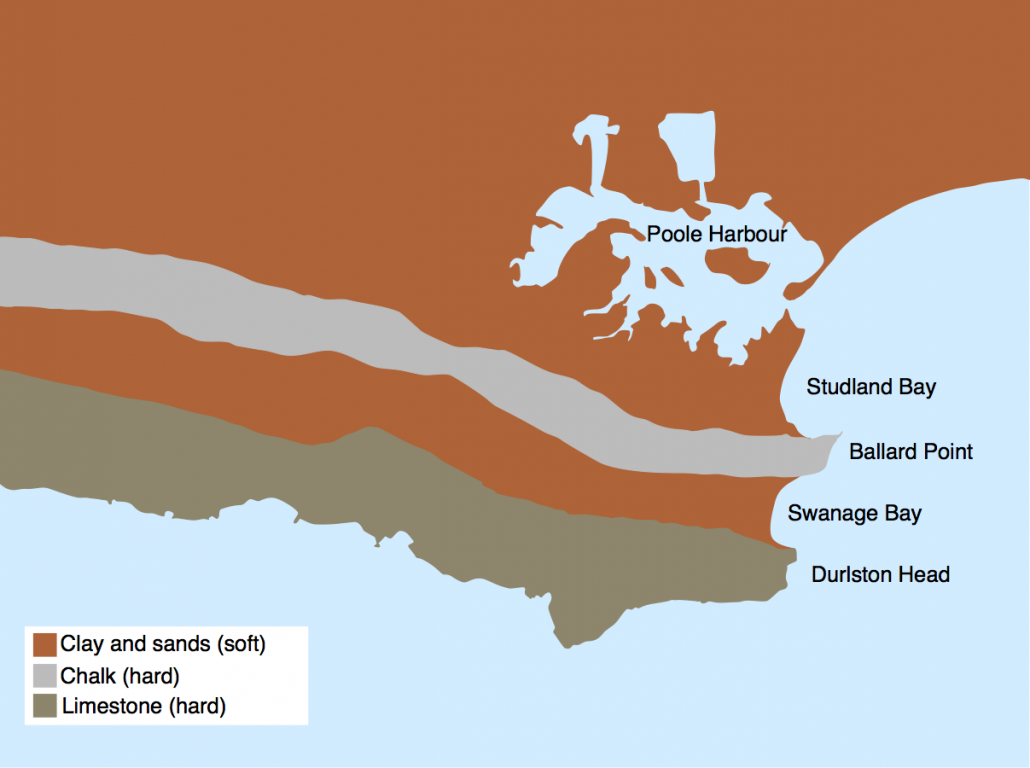Bays and Headlands
What is a headland?
A headland is a cliff that sticks out into the sea and is surrounded by water on three sides. Headlands are formed from hard rock, which is more resistant to erosion, such as limestone, chalk and granite.
Headlands form along discordant coastlines where bands of soft and hard rock outcrop at a right angle to the coastline (see image below). Due to the different nature of rock, erosion occurs at different rates. Less resistant rock (e.g. boulder clay) erodes more rapidly than more resistant rock (e.g. chalk).
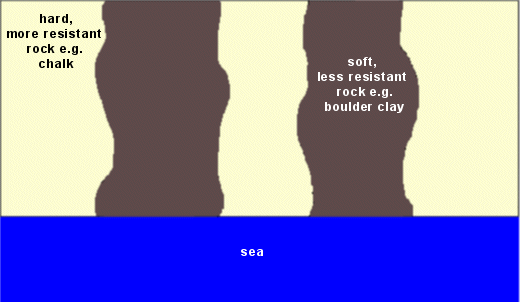
A discordant coastline before erosion occurs
The bands of soft rock, such as sand and clay, erode more quickly than those of more resistant rock, such as chalk. This leaves a section of land jutting out into the sea, known as a headland. The areas where the soft rock has eroded, next to the headland, are called bays. Sandy beaches are often found in sheltered bays where waves lose energy and their capacity to transport material decreases, resulting in the deposition of material.
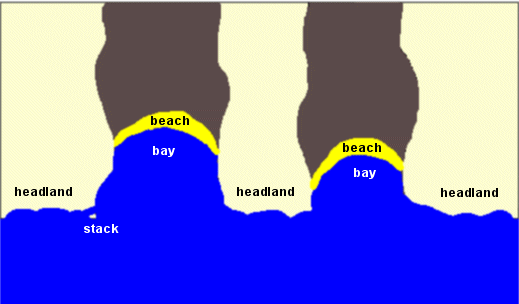
A discordant coastline and the landforms created as the result of different rates of erosion
The image below shows Selwicks Bay at Flamborough.
Where the geology alternates between strata (bands) of soft and hard rock, it is called a discordant coastline. A concordant coastline is one where the same rock type runs along the entire length of the coast. Concordant coastlines tend to have fewer bays and headlands.
Along the coastline of Dorset, there are concordant and discordant coastlines. The concordant coastline runs from west to east along the south coast. The discordant coastline runs from Studland Bay to Durlston Head as the geology changes from clay and sands, to chalk, to clay and sands again, to limestone.

